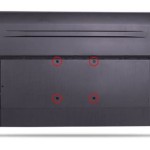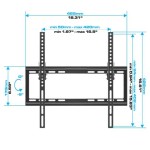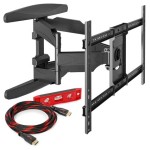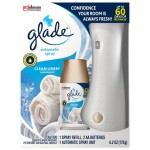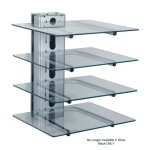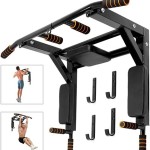Wall Mount Bathtub Faucet with Shower: A Comprehensive Guide
Wall mount bathtub faucets with shower configurations offer a sophisticated and practical solution for bathroom design, optimizing space and providing both bathing and showering functionalities. These fixtures, mounted directly onto the wall, create a clean, minimalist aesthetic, freeing up deck space around the bathtub. Understanding the different types, features, installation considerations, and maintenance requirements is crucial for selecting the appropriate system for a particular bathroom.
The primary benefit of a wall mount design is space efficiency. By eliminating the need for a deck-mounted faucet, more room is available around the bathtub itself. This is particularly advantageous in smaller bathrooms where maximizing every inch of space is paramount. Furthermore, wall-mounted faucets contribute to a cleaner look, as there are fewer surfaces to clean and maintain. The streamlined design minimizes visual clutter, enhancing the overall sense of spaciousness and order within the bathroom.
Another advantage lies in the flexibility of placement. A wall mount faucet allows for precise positioning of the water flow into the tub, accommodating various tub shapes and sizes. The shower component can also be strategically placed to provide optimal coverage. This customization ensures a comfortable and functional bathing experience tailored to individual preferences and the bathroom's specific layout.
Types of Wall Mount Bathtub Faucets with Shower
Several types of wall mount bathtub faucets with shower are available, each with its own characteristics and benefits. These include, but are not limited to, exposed pipe systems, concealed pipe systems, and systems with integrated diverters.
Exposed Pipe Systems: These systems feature visible pipes and connections, often with a vintage or industrial aesthetic. The pipes are intentionally left exposed, adding a design element to the bathroom. These systems are typically easier to install and maintain as all the plumbing is readily accessible. However, they might not be suitable for all design styles, particularly those favoring a more minimalist or modern approach.
Concealed Pipe Systems: In contrast, concealed pipe systems hide all the plumbing behind the wall, resulting in a seamless and uncluttered appearance. Only the faucet spout and showerhead are visible. This design requires more careful planning and installation, as access to the plumbing is limited once the walls are finished. However, the clean aesthetic makes it a popular choice for modern and contemporary bathrooms.
Systems with Integrated Diverters: Many wall mount bathtub faucets incorporate a diverter valve, which allows the user to switch between the bathtub spout and the showerhead. The diverter can be a separate knob or lever, or it can be integrated into the faucet handle. The placement and design of the diverter are crucial factors to consider, ensuring ease of use and compatibility with the overall aesthetic.
Furthermore, the type of showerhead included in the system can vary. Options include fixed showerheads, handheld showerheads, and rain showerheads. Fixed showerheads are permanently mounted to the wall, providing a consistent water flow. Handheld showerheads offer greater flexibility and are useful for rinsing and cleaning. Rain showerheads provide a wider, gentler spray pattern, creating a spa-like experience.
Key Features to Consider
When selecting a wall mount bathtub faucet with shower, several key features should be considered to ensure optimal performance, durability, and aesthetics. These include material, finish, water flow rate, valve type, and compliance with relevant standards.
Material: The material used in the construction of the faucet is a critical factor in determining its longevity and resistance to corrosion. Brass is a common and durable material choice, known for its resistance to rust and its ability to withstand high water pressure. Stainless steel is another popular option, offering a sleek, modern look and excellent corrosion resistance. Other materials, such as copper and bronze, are also available, each with its own unique aesthetic and performance characteristics.
Finish: The finish of the faucet plays a significant role in its aesthetic appeal and its ability to resist scratches and stains. Popular finishes include chrome, brushed nickel, oil-rubbed bronze, and matte black. Chrome provides a classic, shiny look and is relatively easy to clean. Brushed nickel offers a softer, warmer tone and is less prone to showing fingerprints. Oil-rubbed bronze provides a traditional, rustic look and is known for its durability. Matte black offers a contemporary, industrial look and is particularly resistant to water spots.
Water Flow Rate: The water flow rate of the faucet and showerhead is measured in gallons per minute (GPM). Lower flow rates conserve water, while higher flow rates provide a more powerful water stream. Regulations often limit the maximum flow rate allowed for faucets and showerheads. Consider the desired water pressure and the need for water conservation when selecting a faucet with a specific flow rate. Products with WaterSense certification meet EPA criteria for water efficiency and performance.
Valve Type: The valve type controls the flow of water and its temperature. Common valve types include ceramic disc valves, ball valves, and compression valves. Ceramic disc valves are known for their durability and leak-resistant performance. Ball valves are simple and reliable, but they may not provide as precise temperature control as ceramic disc valves. Compression valves are an older technology and are more prone to leaks.
Compliance with Standards: Ensure that the faucet and shower system comply with relevant industry standards and certifications, such as those from the American Society of Sanitary Engineering (ASSE) and the National Sanitation Foundation (NSF). These certifications ensure that the product meets quality and safety standards.
Installation and Maintenance Considerations
Proper installation and regular maintenance are essential for ensuring the long-term performance and reliability of a wall mount bathtub faucet with shower. Installation requires careful planning and execution, while maintenance involves routine cleaning and inspection.
Installation: Installation of a wall mount faucettypically requires a plumber. The process involves several steps, including locating and preparing the plumbing connections, mounting the faucet body to the wall, connecting the water supply lines, and testing for leaks. Accurate measurements and careful alignment are crucial for ensuring proper function and aesthetics. Concealed pipe systems require more extensive planning and preparation, as the plumbing must be installed before the walls are finished.
It is important to consult local building codes and regulations before beginning the installation process. These codes may specify requirements for plumbing materials, installation methods, and water pressure. Failure to comply with these regulations can result in fines or other penalties. Incorrect installation can also lead to leaks, water damage, and other problems.
Maintenance: Regular maintenance is necessary to keep the faucet and shower system in good working condition. This includes cleaning the faucet and showerhead to remove mineral deposits and soap scum. Use a mild detergent and a soft cloth to clean the surfaces. Avoid using abrasive cleaners, as they can damage the finish.
Periodically inspect the faucet and showerhead for leaks. Leaks can waste water and cause damage to the surrounding area. If a leak is detected, the faucet or showerhead may need to be repaired or replaced. It is also important to check the water pressure regularly. High water pressure can damage the faucet and showerhead, while low water pressure can reduce their performance.
In areas with hard water, mineral deposits can accumulate in the faucet and showerhead, reducing water flow and causing them to drip. To remove mineral deposits, soak the faucet and showerhead in a solution of vinegar and water for several hours. Then, scrub them with a soft brush and rinse thoroughly. Consider installing a water softener to reduce the buildup of mineral deposits in the plumbing system.
Wall mount bathtub faucets with shower offer a stylish and practical solution for modern bathrooms. By carefully considering the different types, features, installation requirements, and maintenance needs, it is possible to select a system that provides years of reliable performance and enhances the overall bathing experience. Proper planning and attention to detail are essential for ensuring a successful and aesthetically pleasing installation.

Wall Mount Bathtub Waterfall Faucet With Hand Shower

Remer K02 By Nameek S Kiss Wall Mount Tub Faucet With Hand Shower Thebathoutlet

Ukishiro Single Handle 1 Spray Settings Wall Mount Tub And Shower Faucet In Brushed Nickel Smd00ji2116009 The Home

Ukishiro Single Handle 1 Spray Settings Wall Mount Tub And Shower Faucet In Brushed Nickel Valve Included Smd0jo220711007 The Home

Modern Wall Mount With Pullout Hand Shower Bathtub Led Waterfall Faucet

Remer K02 By Nameek S Kiss Wall Mount Tub Faucet With Hand Shower Thebathoutlet

Miscool Boger Single Handle Wall Mount Roman Tub Faucet With Hand Shower In Brushed Nickel Shsmdh10c021bn The Home

Modern Design Wall Mount Brushed Nickel Waterfall Tub Mixer Tap With Brass Handheld Shower

Thermostatic Bath Tub Faucet Contemporary Shower Mixer Faucetec

Zalerock Single Handle 1 Spray Wall Mount Tub And Shower Faucet In Black Valve Included Sshsj0300b The Home

